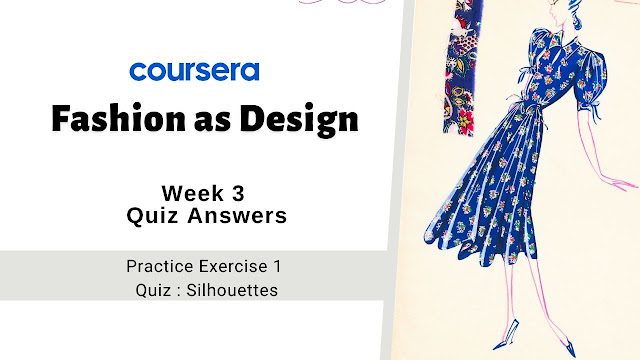Fashion as Design Week 3 Quiz Answers
Hello Friends In this article i am gone to shear Coursera Course Fashion as Design Week 3 Quiz | Practice Exercise 1 Quiz : Silhouettes Answers with you..
Fashion as Design Week 3 Quiz Answers
Also visit this link: Fashion as Design Week 2 Quiz Answers
Practice Exercise 1 Quiz : Silhouettes
Question 1)
A buckram mannequin is made by:
- Carving into foam boards
- Casting the form in clay
- 3-D printing a plastic form
- Wetting and molding sheets of millinery fabric
Question 2)
Which of the following is true?
- The shift dress represented a rejection of the little black dress’s dominance in fashion
- The little black dress can be characterized by a consistent color, whereas the shift dress is characterized by a consistent silhouette
- The little black dress is considered a defined and unchanging garment, whereas the shift dress is a site of experimentation for designers
Question 3)
Gabrielle “Coco” Chanel invented the little black dress.
- True
- False
Question 4)
A traditional Japanese sock-like foot covering that features a bifurcation between the first and second toes is called:
- Zori
- Geta
- Tabi
Question 5)
The pencil skirt became more popular during World War II because it was easily cut, which reduced fabric waste and therefore met material rationing standards.
- True
- False
Question 6)
Centuries-old precursors to the fanny pack include: (Select all that apply)
- Bindel
- Wallet
- Tie pocket
- Chatelaine
Question 7)
In which decade did Eddie Bauer and Charles James develop designs for down-filled jackets?
- 1890s
- 1910s
- 1930s
- 1950s
Question 8)
The silhouette of the Capri pant, a close-fitting trouser extending just above the ankle, has been associated with: (Select all that apply)
- Liberation
- Practicality
- Leisure
- Rebelliousness
- All of the above
Question 9)
The zoot suit is composed of a broad-shouldered, wide-armed jacket enhanced by a narrowly cut waist, and ballooning pegged trousers.
- True
- False
Question 10)
When did the term “plus size” come into wide use?
- 1920s
- 1940s
- 1960s
- 1980s

